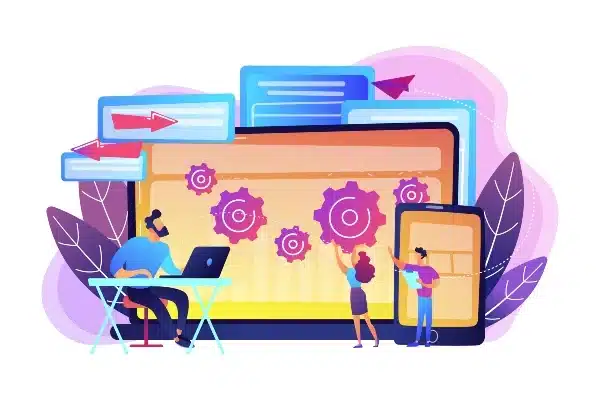How to kick start your MSP Sales.
Why perform an “IT Infrastructure” Audit?
August 2, 2016Why SMBs should consider shared CIO services.
August 29, 2016You can probably deploy a few hundred virtual machines with your eyes closed, but one of the real challenges for MSPs is attracting potential new clients. Many MSPs complains that they are not been able to obtain their desired sales number, struggling to close deals, losing out profitable deals to competitors and though monthly recurring revenue is a necessity for every MSP, but many lack the experience or time to focus on sales.
MSP sales process is a complex one, but we have compiled a few points which is a perfect recipe for a revolutionized sales approach.
Define your market checkpoint
Focus Identify the types of businesses you intend to target
Determine the size of the businesses will you target

Build Your Solution Checkpoint
Gauge a better understanding of your prospects.
Understand how their business operates
Know the key business drivers.
Identify mission critical application or process.

Competitive analysis
How do they address their needs. Understanding of this will help you to effectively position your offerings against it.

Work on your USP
There are thousands of MSPs doing exactly what you do. So, what makes your company stand out? In MSP sales, there’s not a whole lot that varies from one service offering to another. But, your clients don’t want the details of the services you offer. They’re more interested in how your IT services impact their business. So, Start talking about your MSP Super Power. This is the unique value you bring to the table. It’s how your processes work together to improve each client’s business operations. What does your company do better than all the others? Show how your processes are the solution to your client’s problems.
If your messaging misses the mark, it’s nearly certain that your efforts to attract new customers will fail Show your prospects that you understand their business needs Be seen as an expert in their field Make sure your service offer addresses their business needs

Work on the sales pitch – Sell Service, Not Technology
Any MSP that a prospect randomly finds online could offer seemingly impressive technology features. But, your clients aren’t necessarily in the market for technology. They’re in the market for IT services that allow their business to operate better. You may talk the tech lingo, but your clients don’t. They speak profits, costs, risk and efficiency. Refocus your MSP sales pitch on the end result. How does your technology help your clients’ businesses run smoothly? They want to know that they won’t be hindered by unexpected IT system downtime or crippled by outrageous costs for IT services. Instead of focusing on specific aspects of the technology you offer, highlight how your services increase productivity, keep costs manageable and mitigate risk for your clients.

Define the sales role:
There are three roles in sales, not one. You can distribute them to your existing people, or of course hire part-time or full-time pros.
i. Inside sales: creating qualified leads to generate opportunities, communicating by email, phone, and social networks.
ii. Outside sales: visiting prospects, pre-sales, sales, nurturing the account, closing sales, visiting clients regularly, all the time spending company money on fuel, food and CRM software licenses.
iii. Executive: maintaining high level connections, making conversation, meeting with clients when processes are stuck, or whenever executive encouragement is needed.
iv. Account manager: all the up-selling to existing clients, and checking in on a monthly basis to do monthly/quarterly activities and to calculate the required budget for upcoming projects and new products.
If you’re able to separate these different functions, you’ll find you can get the right people from the labor market to work for you and achieve real results.

Work on your branding – Every brand has a story to tell
Your brand is your promise to your customer. It tells them what they can expect from your products and services, and it differentiates your offering from that of your competitors. Selling managed services is about selling value over the long run. It has a subtly different flavor from selling IT products and services in the break/fix model. The most successful MSPs position themselves as business advisors and trusted partners rather than just IT troubleshooters. As you tell the story of your brand, be sure to weave in the peace of mind and improved long-term ROI that clients will enjoy when working with you.
Be internally explicit about your brand messaging– What are the key messages you want to communicate through your brand? Make sure they are written down so that every employee is on board with your brand attributes. Every time somebody interacts with your team, the brand is either reinforced or weakened. Make sure your employees understand the vision and priorities and how that translates into their daily work.
Look and sound consistently great: Apply your brand consistently across:
i. Your website, social media, blogs, portals, and other online assets
ii. Marketing materials, such as posters, booths, brochures
iii. Sales-enablement materials such as price sheets, case studies, white papers
Deliver on your brand promise: Branding can extend to every aspect of your business. Beyond the obvious like your website and letterhead, consider how you answer the phones, what your employees wear, and e-mail signatures. Most importantly, be true to your brand. As I mentioned earlier, your brand tells customer what they can expect from your products and services. Make sure you meet those expectations or you’re sunk as a brand!

Utilize LinkedIn to its optimum:
Though LinkedIn cannot replace other marketing efforts but it has proved itself to be the best professional networking site with the largest pool of your targeted prospects and thus it makes sense to focus on it.
You can’t just wait for followers to come to you on LinkedIn – you have to put yourself out there and offer something of value. Once you start establishing yourself as an expert, you can build bigger, more sprawling networks that will actually attract people you don’t already know, people who might actually be interested in the services of your MSP. But you can only do that if you prove that you’re worth it. Here are few tips for providing useful, worthy information that will appeal to other business owners on LinkedIn, so you can build their interest, establish trust, and begin promoting and selling your service:
i. Create your own LinkedIn Group
ii. Participate in other LinkedIn Groups.
iii. Promote your LinkedIn Page via other marketing vehicles
iv. Take advantage of LinkedIn Follow Ads.
v. Connect with people of domain other than your targeted domain as well to grow your network and increase the chances of getting reference.
vi. Position yourself as an industry expert by posting educative content and not only the content related to your product/services in particular.

Thus, you can see that this isn’t rocket surgery. Nonetheless it requires a fair amount of planning and dedicated work to accomplish, but the benefit is that you owners will have more free and creative time. If you’re not able to develop this process, automation, and roles, you will be working too much in the company rather than on the company, and squandering your entrepreneurial spirit on breathing life into your organization.



